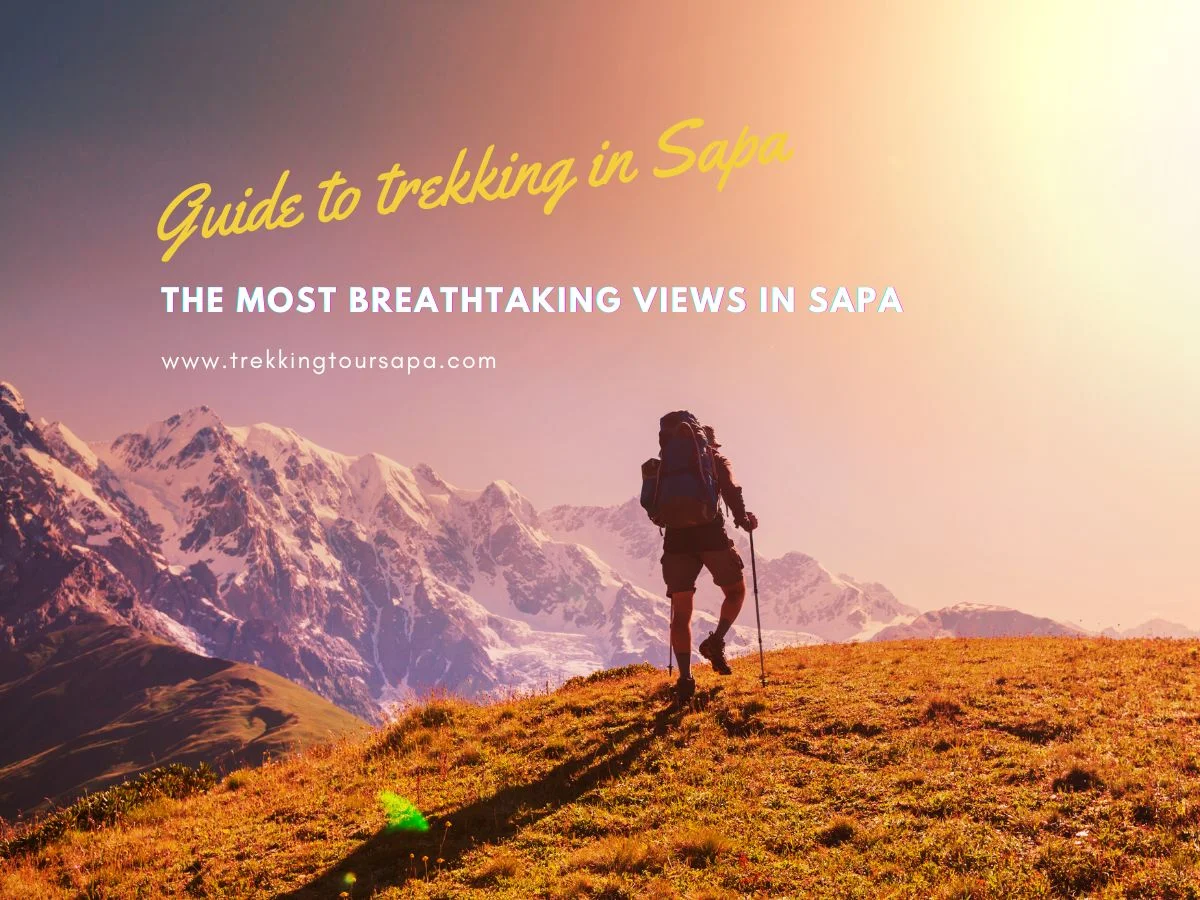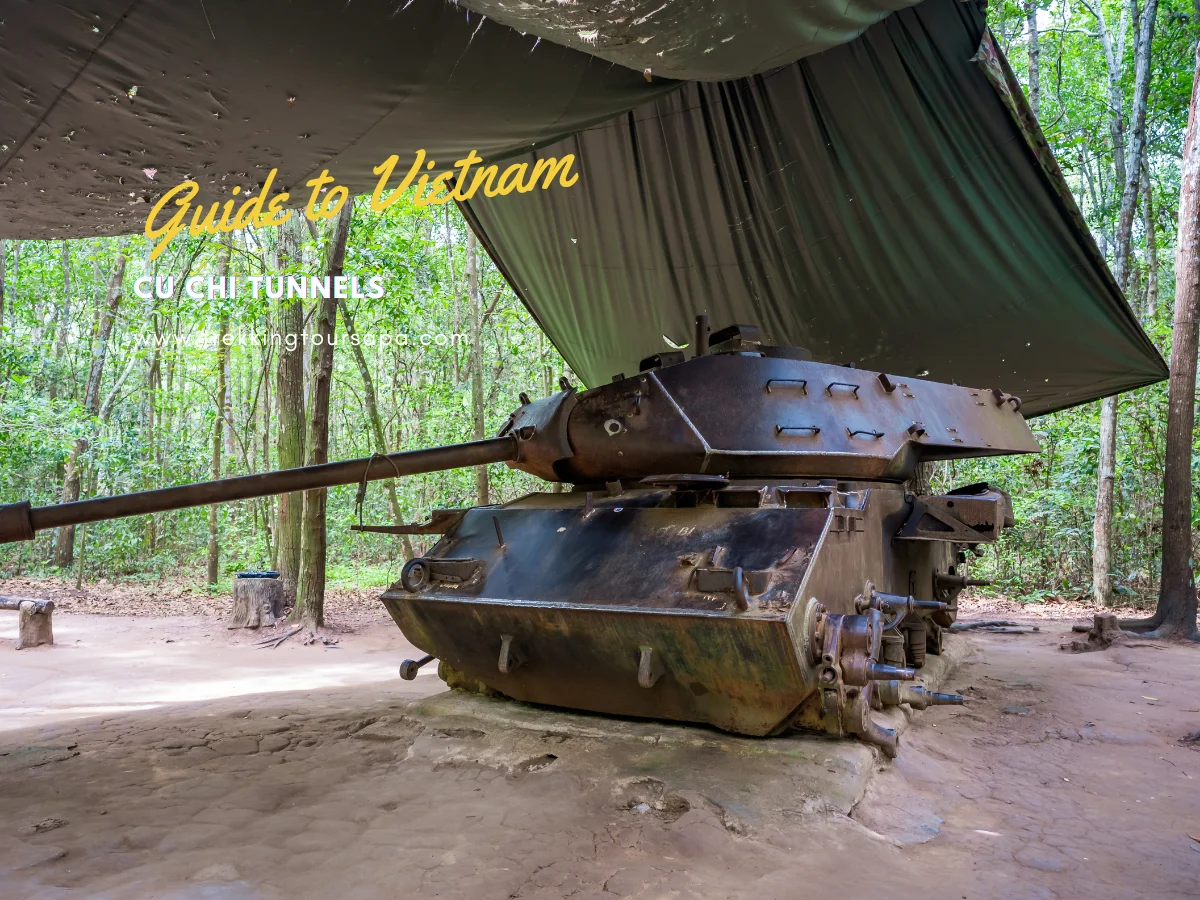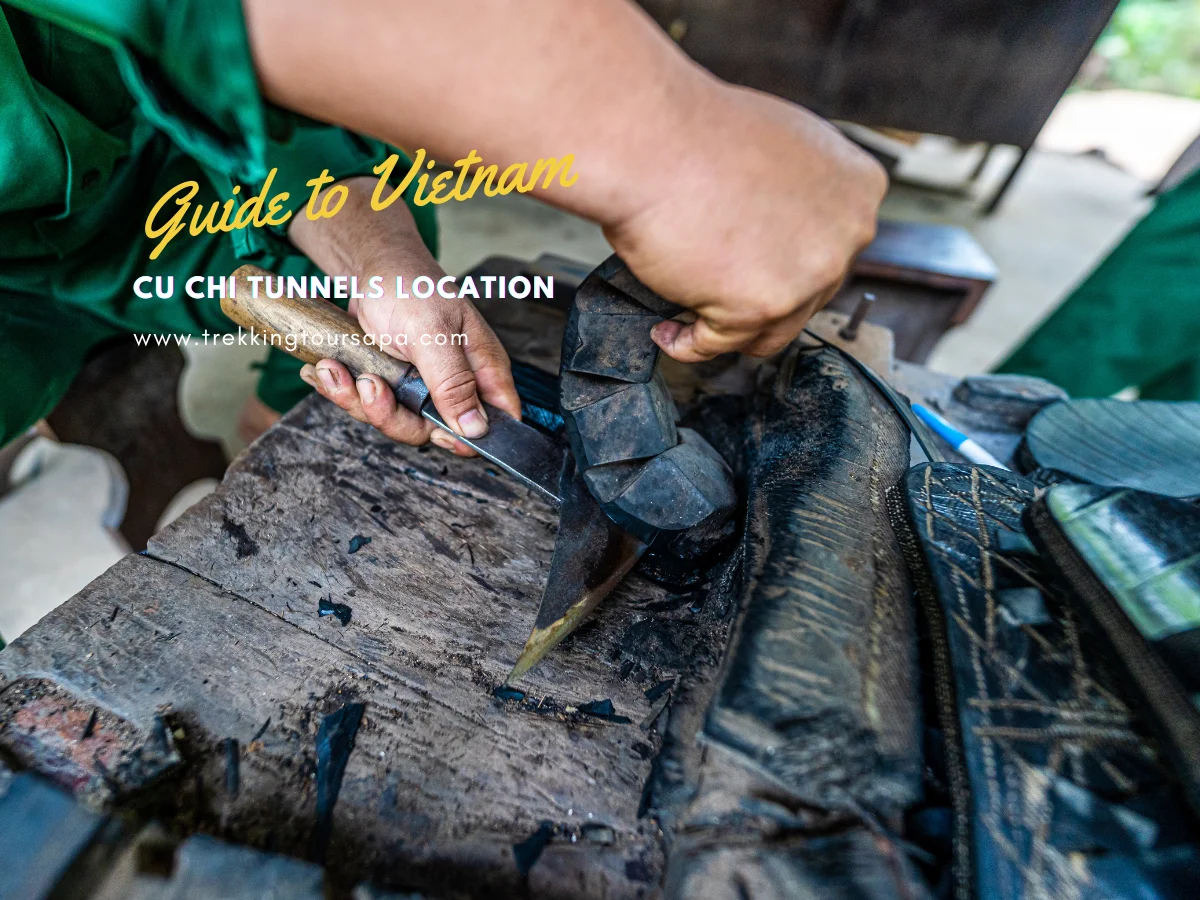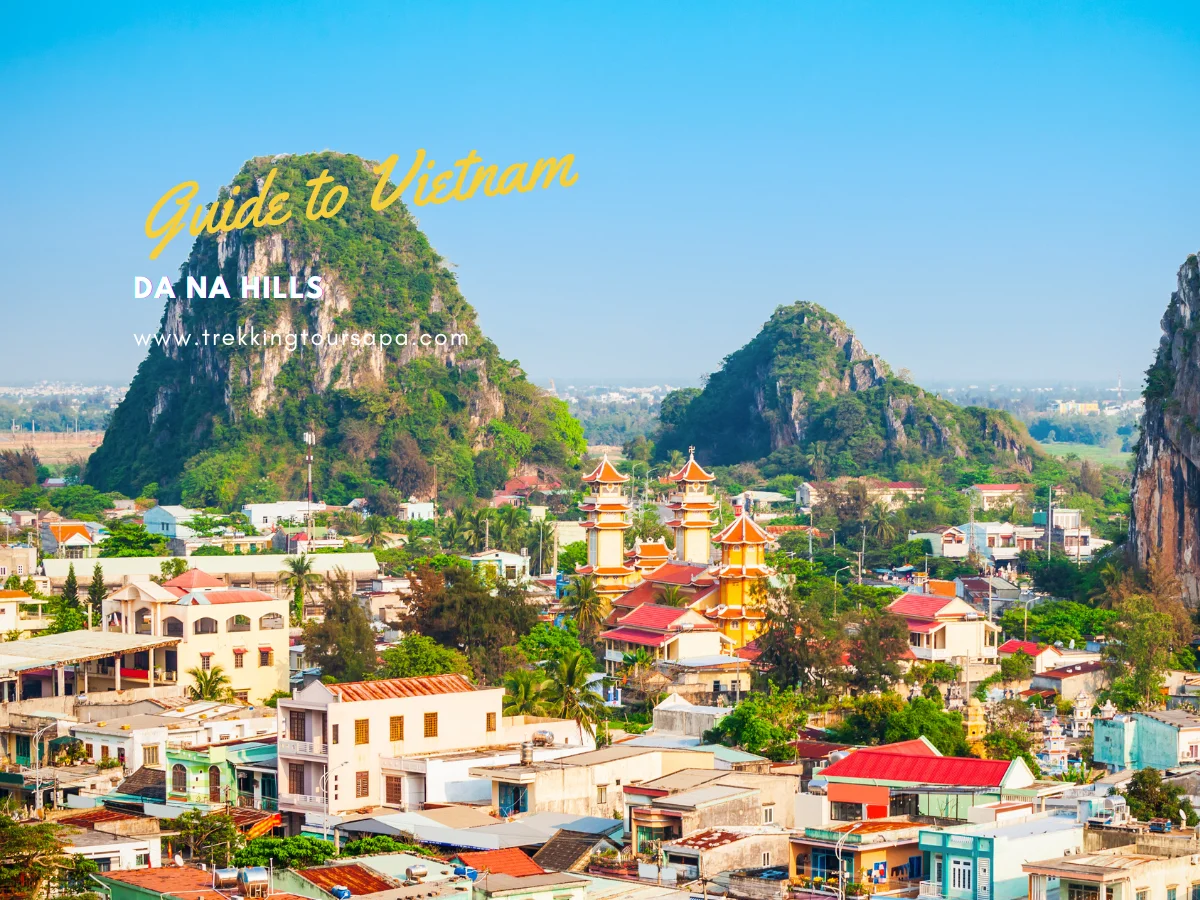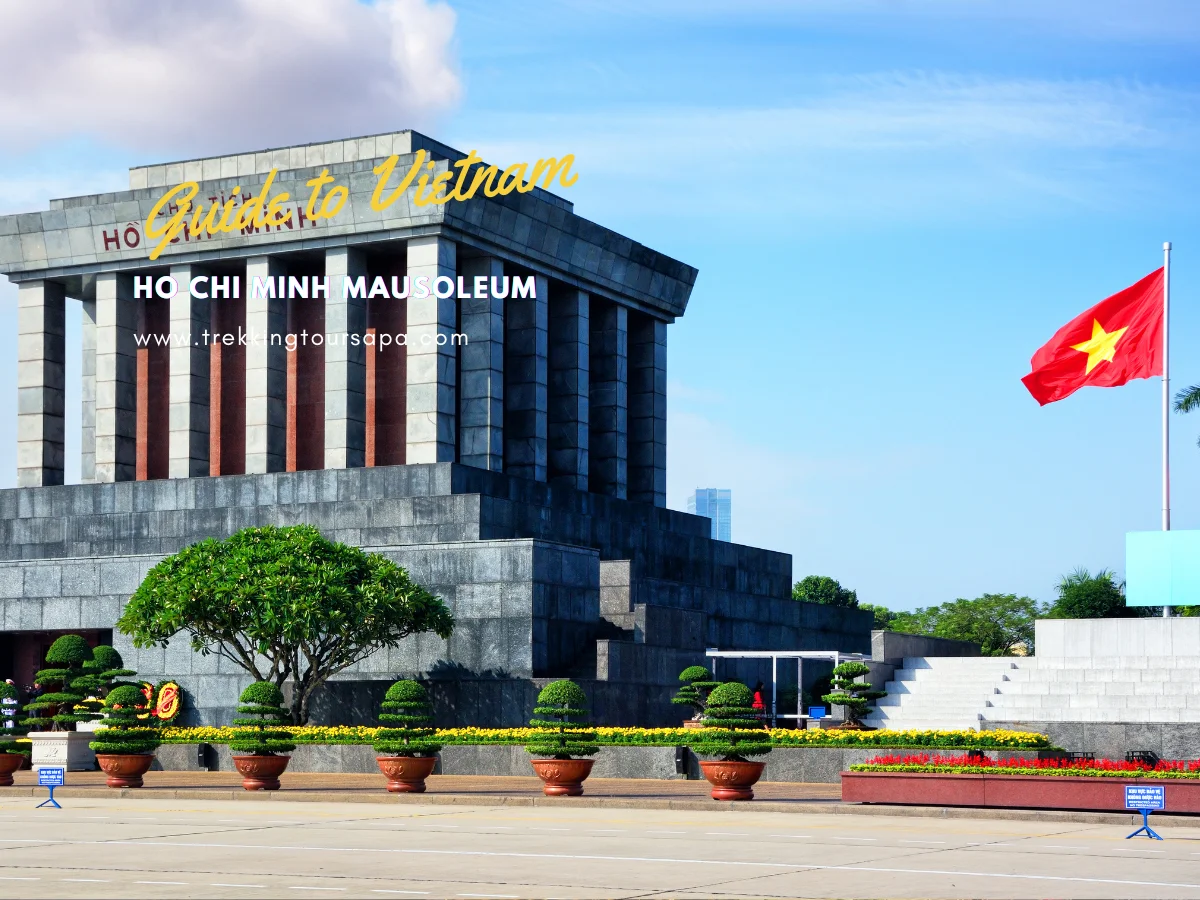You dream of escaping the hustle and bustle of city life, breathing in fresh air, and immersing yourself in nature’s beauty. Look no further than Sapa’s rice terraces. Nestled deep within Vietnam’s northern mountainous region, Sapa is a picturesque destination that boasts stunning landscapes and rich cultural heritage. With its lush greenery and intricate system of rice terraces, it’s no wonder why Sapa has become a must-visit destination for those seeking freedom from their daily routines.

For centuries, the Hmong people have been cultivating rice on these terraced slopes, turning them into works of art that are not only visually appealing but also ecologically sustainable. These breathtaking structures are more than just tourist attractions; they represent the toil and perseverance of the local communities who have lived off these lands for generations. So pack your bags, open your heart to new experiences, and get ready to explore some of the most beautiful rice terraces in Sapa!
Table of Contents
ToggleThe History and Significance of Rice Terraces in Sapa
Let’s delve into the rich history and cultural significance of the stunning agricultural landscapes that grace the hillsides of this northern Vietnamese region. The origins of rice terraces in Sapa can be traced back to over 1,000 years ago when ethnic minority groups migrated from China to Vietnam. These groups brought with them their unique farming techniques and knowledge that enabled them to cultivate rice in high-altitude areas where traditional farming methods would not have been possible.

The creation of these terraced fields was a necessity for survival as it allowed locals to grow enough food for themselves and their families. Over time, these fields have become an integral part of Sapa’s culture and identity. Rice terraces are a symbol of hard work, determination, and ingenuity; they embody the spirit of the people who created them. Today, these breathtaking landscapes attract tourists from all over the world who come to admire their beauty and learn about their cultural significance.
Now let’s explore one specific area within Sapa that is known for its incredible rice terraces: Muong Hoa Valley Rice Terraces.
Muong Hoa Valley Rice Terraces
You can’t help but feel a sense of awe and wonder as you gaze upon the vast expanse of emerald green fields cascading down the hillsides in front of you. The Muong Hoa Valley Rice Terraces are a sight to behold, stretching out for miles with their perfectly formed ridges and valleys. If you’re up for an adventure, there are several hiking routes available that will allow you to explore these magnificent rice terraces up close.

For those looking to capture the perfect shot, here are some photography tips:
- Time your visit: The best time to photograph the rice terraces is during the planting or harvesting season when they are at their most vibrant.
- Look for patterns and textures: The ridges and valleys create unique patterns that make for stunning photographs.
- Experiment with angles: Don’t be afraid to get low or high to capture different perspectives.
As captivating as the Muong Hoa Valley Rice Terraces may be, another set of rice terraces awaits your discovery – Cat Cat Village Rice Terraces. These terraced fields offer a glimpse into traditional Hmong culture and farming practices dating back hundreds of years.
Sapa 1 Day Tours
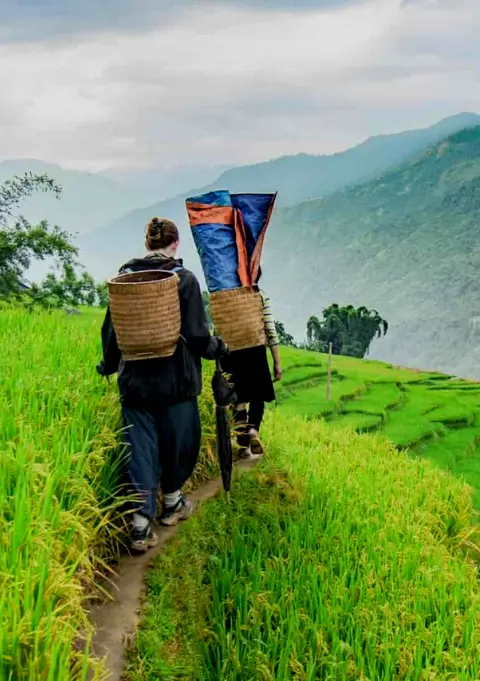
- 1 day experience
- Moderate to challenging
- Cultural immersion & active adventure
- Rice fields, valleys & villages
- Private tours
- Vegan-friendly
Sapa 2 Day Tours
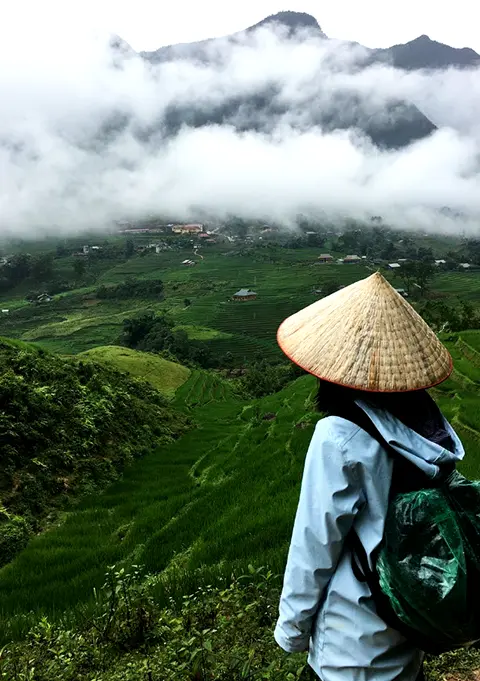
- 2 days 1 night experience
- Moderate to challenging
- Cultural immersion & active adventure
- Mountains, valleys, rice fields and villages
- Private tours
- Vegan-friendly
Sapa 3 Day Tours
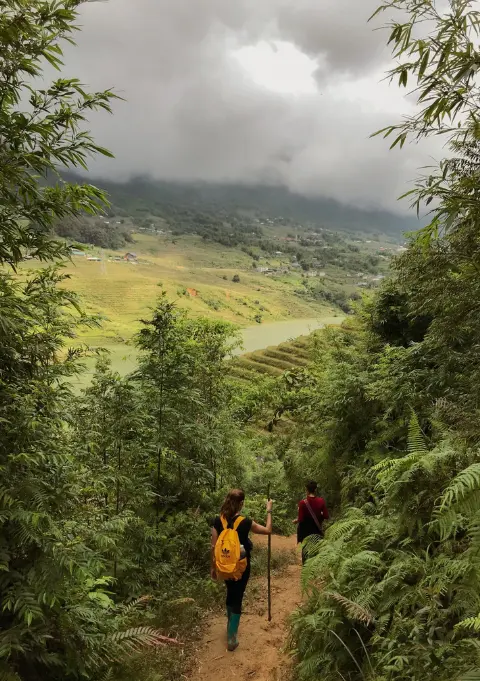
- 3 days 2 night experience
- Moderate to challenging
- Cultural immersion & active adventure
- Mountains, valley, rice fields & villages
- Private tours
- Vegan-friendly
Sapa 4 Day Tours
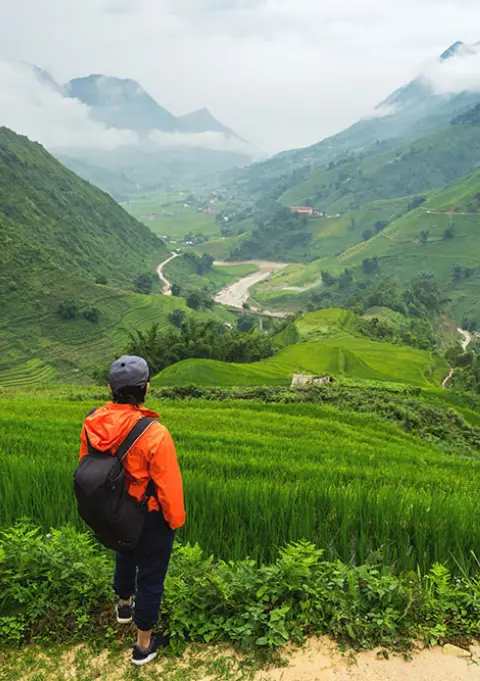
- 4 days 3 night experience
- Moderate to challenging
- Cultural immersion & active adventure
- Mountains, valleys, rice fields & villages
- Private tours – Less Touristic
- Vegan-friendly
Cat Cat Village Rice Terraces
The Cat Cat Village Rice Terraces provide a unique opportunity to immerse oneself in the rich history and cultural traditions of the Hmong people. The terraced fields have been cultivated by generations of Hmong farmers using traditional agricultural techniques, which are still practiced today. This cultural preservation is not only important for the local community, but also for visitors who want to learn more about the customs and way of life in this region.

As you walk through the rice paddies, you will be struck by their beauty and intricacy. The lush greenery of the terraces contrasts with the vibrant clothing worn by locals as they tend to their crops, creating a stunning visual experience. You may even have the chance to witness traditional dance performances or visit local handicraft shops where you can purchase handmade items such as embroidered textiles or silver jewelry. From here, it’s just a short journey to Ta Van Village Rice Terraces, where another breathtaking display awaits you.
Sapa 1 Day Tours

- 1 day experience
- Moderate to challenging
- Cultural immersion & active adventure
- Rice fields, valleys & villages
- Private tours
- Vegan-friendly
Sapa 2 Day Tours

- 2 days 1 night experience
- Moderate to challenging
- Cultural immersion & active adventure
- Mountains, valleys, rice fields and villages
- Private tours
- Vegan-friendly
Sapa 3 Day Tours

- 3 days 2 night experience
- Moderate to challenging
- Cultural immersion & active adventure
- Mountains, valley, rice fields & villages
- Private tours
- Vegan-friendly
Sapa 4 Day Tours

- 4 days 3 night experience
- Moderate to challenging
- Cultural immersion & active adventure
- Mountains, valleys, rice fields & villages
- Private tours – Less Touristic
- Vegan-friendly
Ta Van Village Rice Terraces
There’s something enchanting about the Ta Van Village Rice Terraces that transports you to another world, where time seems to stand still and nature reigns supreme. As you hike through the lush greenery of this village, you’ll be greeted with breathtaking views of tiered rice paddies that seem to stretch out into infinity. Here are just a few reasons why the Ta Van Village Rice Terraces should be on your bucket list:
- Cultural immersion: The people of Ta Van Village have managed to preserve their traditional way of life despite being exposed to modern developments. You’ll get a chance to witness their customs, traditions, and daily rituals up close and personal.
- Hiking trails: Whether you’re an experienced hiker or just starting out, there’s a trail for everyone in Ta Van Village. From easy walks around the rice terraces to more challenging treks up the mountain, there’s no shortage of outdoor activities here.
- Waterfalls: If you’re looking for a refreshing dip after a long day of hiking, head over to one of the waterfalls in Ta Van Village. The cascading waters provide a serene backdrop for relaxation and rejuvenation.
- Homestays: For an authentic experience, consider staying with a local family in their home stay accommodation. You’ll get a taste of traditional Vietnamese cuisine and learn firsthand about their way of life.

As you bid farewell to the mesmerizing beauty of Ta Van Village Rice Terraces, don’t forget to add Lao Chai Village Rice Terraces to your itinerary – it’s another must-see destination in Sapa that promises stunning views and unforgettable memories!
Lao Chai Village Rice Terraces
Get ready to explore the rustic charm and stunning landscapes of Lao Chai Village, a hidden gem nestled in the mountains of Vietnam. As you make your way through the winding roads, you’ll be greeted by vast rice terraces that seem to go on forever. These terraces are not just beautiful, they also sustain the local community’s livelihood. You can see farmers using traditional farming techniques to cultivate their crops – it’s fascinating to watch them work so closely with nature.
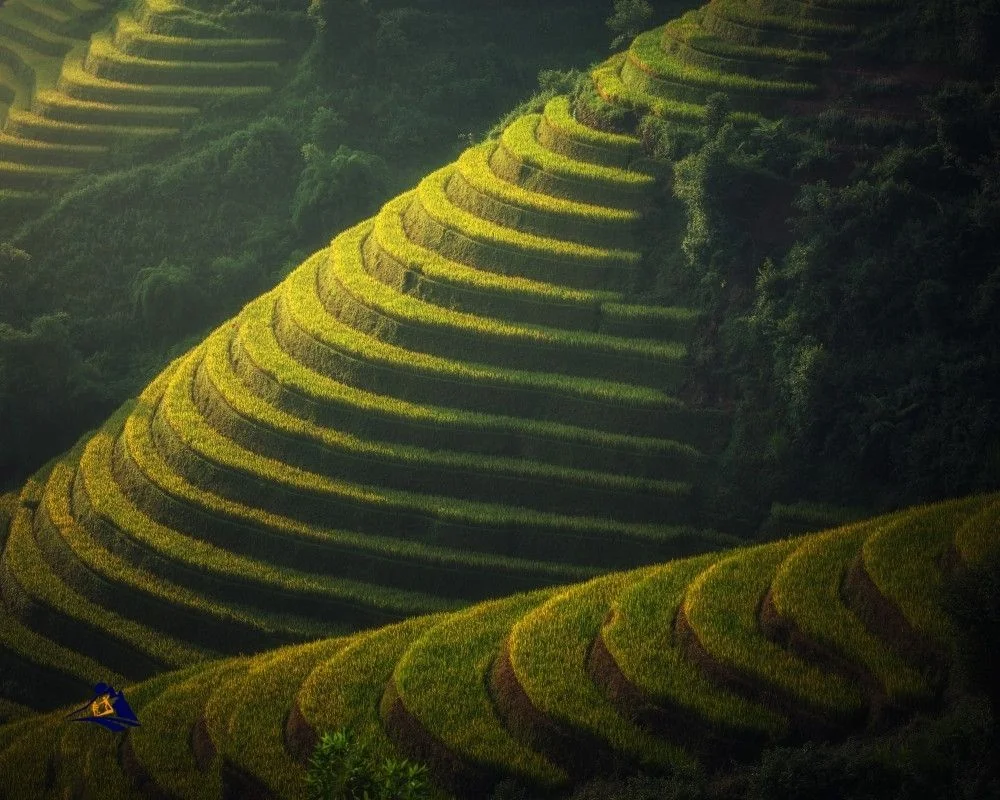
As you walk along the terraces, you’ll find yourself surrounded by lush greenery and fresh mountain air. The scenery is breathtaking and every turn offers a new perspective. You might even spot some water buffalo grazing in the fields or locals going about their daily activities. It’s truly an immersive experience that will give you a glimpse into rural life in Vietnam. But don’t stop here! There’s still more beauty to discover in Ban Ho Village Rice Terraces – let’s keep exploring!
Ban Ho Village Rice Terraces
You’ll be transported to a serene and idyllic world as you traverse through the winding paths of Ban Ho Village, soaking in the sights of verdant hillsides, rustic huts and cascading waterfalls. The rice terraces in this village are breathtakingly beautiful and are a result of centuries-old community involvement and ecotourism practices.

Ban Ho Village is home to some of the most stunning rice terraces in Sapa. With its picturesque landscape, it’s no wonder that tourists flock here to experience the natural beauty of Vietnam. The locals have been practicing sustainable farming techniques for generations and have managed to maintain their traditional way of life while preserving the environment. As you stroll along the rice paddies, you’ll notice how well-maintained they are, with each terrace being perfectly leveled and built with great care. The eco-friendly approach adopted by this community has made it possible for visitors to appreciate nature without damaging it.
Hoang Lien Son National Park Rice Terraces
Explore the breathtaking landscape of Hoang Lien Son National Park as you traverse through winding paths and discover the stunning green hillsides. The hiking trails in the park will take you to some of the most beautiful rice terraces in Sapa, where you can witness firsthand how biodiversity conservation is being successfully implemented. The rice terraces are an integral part of this ecosystem, and have been carefully maintained for centuries by local farmers who understand the importance of preserving their natural beauty.

As you make your way through Hoang Lien Son National Park, be sure to take in the sights and sounds around you. The fresh mountain air combined with the lush vegetation creates a sense of freedom that is hard to find anywhere else. This feeling is heightened when you gaze upon the magnificent rice terraces that stretch out before you. But what does the future hold for these majestic landscapes? Let’s take a closer look at what’s in store for Sapa’s rice terraces.
The Future of Sapa’s Rice Terraces
1) When discussing the future of Sapa’s rice terraces, you cannot ignore the importance of sustainable tourism practices. The pressure on these landscapes is growing each year, and it is vital that we find ways to balance visitor experience with environmental conservation.
2) Preservation efforts for the terraces must also be discussed. These ancient farming techniques are under threat from modernization and urbanization, and urgent action is needed to ensure their survival for future generations.
3) Finally, it’s important to recognize the essential role that local communities play in sustaining Sapa’s rice terraces. Their knowledge, traditions and livelihoods are intrinsically linked to this landscape, and without their support any preservation or sustainability efforts will ultimately fail.
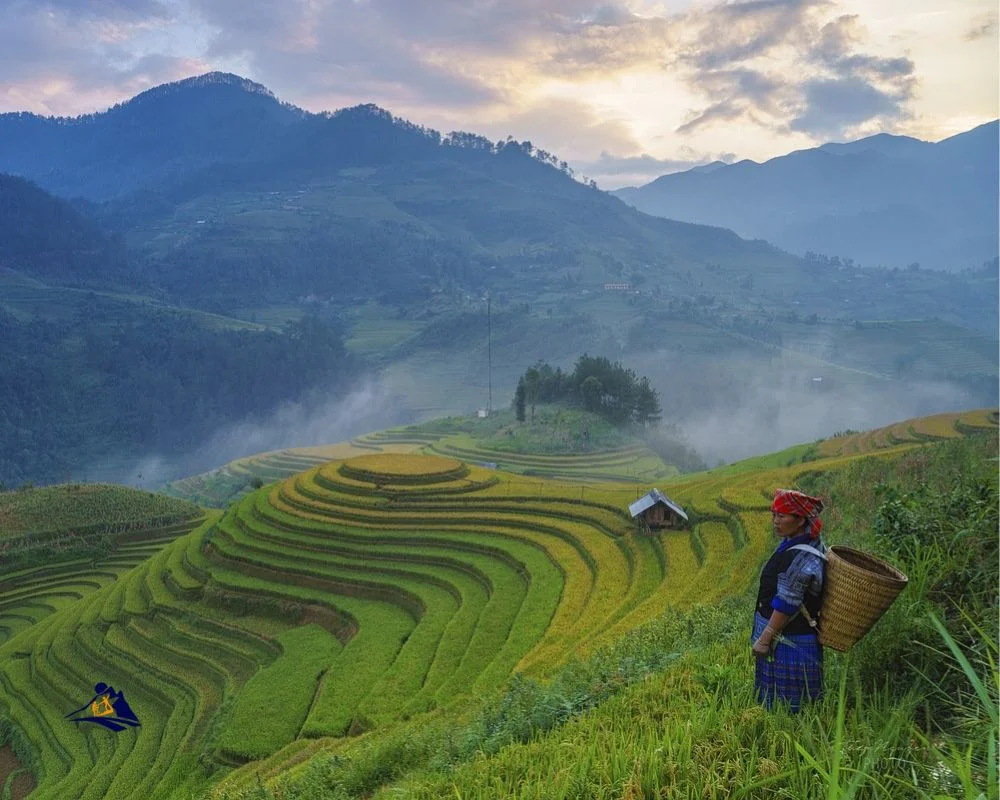
Sustainable Tourism Practices
If you want to truly experience the local culture and environment, it’s important to practice sustainable tourism when visiting this breathtaking region. Sustainable travel means being mindful of your impact on the community and environment, as well as supporting responsible exploration that benefits the locals. When visiting Sapa’s rice terraces, make sure to choose eco-friendly accommodations, pack light and bring reusable items such as water bottles and utensils. Opt for public transportation or walking instead of private cars or motorbikes.

Another way to support sustainable tourism is by participating in local tours and activities that promote cultural exchange while being respectful of traditional customs. Take time to learn about the local communities’ history, beliefs, food, and crafts. By doing so, you’ll be able to appreciate the beauty of Sapa’s rice terraces even more deeply while contributing positively to the area’s economy and sustainability efforts.
As you explore Sapa’s stunning landscape through sustainable travel practices, it’s also vital to recognize preservation efforts for the terraces and local communities. In recent years there have been initiatives aimed at protecting these unique landscapes from overdevelopment while supporting rural livelihoods through ecotourism opportunities. Let’s take a closer look at what steps are being taken towards preserving these valuable resources in our next section.
Sapa 1 Day Tours

- 1 day experience
- Moderate to challenging
- Cultural immersion & active adventure
- Rice fields, valleys & villages
- Private tours
- Vegan-friendly
Sapa 2 Day Tours

- 2 days 1 night experience
- Moderate to challenging
- Cultural immersion & active adventure
- Mountains, valleys, rice fields and villages
- Private tours
- Vegan-friendly
Sapa 3 Day Tours

- 3 days 2 night experience
- Moderate to challenging
- Cultural immersion & active adventure
- Mountains, valley, rice fields & villages
- Private tours
- Vegan-friendly
Sapa 4 Day Tours

- 4 days 3 night experience
- Moderate to challenging
- Cultural immersion & active adventure
- Mountains, valleys, rice fields & villages
- Private tours – Less Touristic
- Vegan-friendly
Preservation Efforts for the Terraces and Local Communities
Now that you have learned about sustainable tourism practices, let’s dive deeper into the preservation efforts for the stunning rice terraces in Sapa. The local communities have played a vital role in maintaining and protecting these natural wonders for generations. It is essential to acknowledge their involvement and support them in their efforts.

Cultural tourism has also played a significant role in preserving these terraces. By showcasing the cultural significance of these landscapes, tourists gain a deeper understanding of their importance and contribute to their conservation efforts. Additionally, responsible tourism practices such as minimizing waste, respecting local customs and traditions, and supporting local businesses can help preserve not only the rice terraces but also the way of life of the people living there. Together with community involvement and sustainable practices, we can ensure that future generations will be able to enjoy the beauty of Sapa’s rice terraces.
The Most Beautiful Rice Terraces In Sapa Frequently Asked Questions
What is the best time of year to visit the rice terraces in Sapa?
If you’re planning a visit to Sapa and want to see the magnificent rice terraces, you’ll want to pay attention to the peak season and weather conditions. The best time of year to visit is from September to November when the rice fields turn yellow and the skies are clear. During this time, you can witness the harvest season and experience local festivals. However, keep in mind that this is also peak tourist season, so expect crowds. If you prefer fewer visitors, consider visiting from March to May when the weather is mild and there’s less chance of rain. No matter what time of year you choose, make sure to check weather conditions before heading out to ensure a safe and enjoyable trip.
Are there any restrictions or regulations on hiking through the rice terraces?
When hiking through the rice terraces in Sapa, it’s important to be aware of the hiking regulations and their environmental impact. The local government has implemented rules to protect these natural wonders from overuse and damage caused by tourism. This includes staying on designated paths, not littering or leaving any waste behind, and respecting the culture and traditions of the locals who live there. By following these regulations, you can have a safe and enjoyable experience while also preserving the beauty of this stunning landscape for generations to come. So go ahead, explore these breathtaking vistas with peace of mind knowing that you are doing your part in protecting this natural wonderland.
Can visitors participate in the rice planting and harvesting process?
You can fully immerse yourself in the local farming traditions of Sapa by participating in rice harvesting workshops. These workshops are a unique opportunity to learn about the process of planting and harvesting rice firsthand from local farmers. You’ll get to experience the hard work that goes into growing this staple crop, and gain a deeper appreciation for the beauty of the rice terraces. As you work alongside locals, you’ll develop a sense of connection with nature and community that will leave you feeling fulfilled and free.
What is the cultural significance of rice in the Sapa region?
Cultural traditions and agricultural practices are deeply intertwined in the Sapa region, where rice is a staple crop that has been cultivated for centuries. The Hmong people have developed unique techniques for planting and harvesting rice, which they pass down from generation to generation as part of their cultural heritage. Rice represents not only sustenance but also community and identity for the people of Sapa. If you’re interested in experiencing this rich cultural tradition firsthand, consider participating in a rice planting or harvesting activity during your visit to the region. It’s an opportunity to connect with locals, learn about their way of life, and gain a newfound appreciation for the importance of agriculture in Sapa’s culture.
Are there any endangered plant or animal species that can be found in the rice terraces?
Are you curious about the endangered species that can be found within the rice terraces of Sapa? Conservation efforts have been put in place to protect these fragile ecosystems and their inhabitants. The Sapa region is home to a variety of rare plant and animal species, including the Sapa langur monkey, which is critically endangered due to habitat loss and hunting. In addition, the rice terraces themselves are considered an endangered cultural landscape, as modernization threatens traditional farming practices. But with ongoing conservation efforts, there is hope for preserving both the biodiversity and cultural heritage of this stunning region.
Conclusion
You’ve just explored the most beautiful rice terraces in Sapa, Vietnam. The history and significance of these terraces are deeply rooted in the local culture and economy. From the Muong Hoa Valley to Hoang Lien Son National Park, each village has its unique charm and beauty that will leave you breathless.
As a traveler, you have a responsibility to help preserve these natural wonders for future generations. You can support the local communities by visiting responsibly, choosing eco-friendly accommodations, and buying locally made products. By doing so, you’ll not only contribute to the preservation of Sapa’s rice terraces but also promote sustainable tourism practices that benefit both locals and visitors.
In conclusion, Sapa’s rice terraces are truly a sight to behold. So next time you’re planning a trip to Vietnam, make sure to include a visit to these magical landscapes on your itinerary. And remember, with responsible travel practices we can ensure that these stunning terraced fields continue to thrive for years to come.
Sapa 1 Day Tours

- 1 day experience
- Moderate to challenging
- Cultural immersion & active adventure
- Rice fields, valleys & villages
- Private tours
- Vegan-friendly
Sapa 2 Day Tours

- 2 days 1 night experience
- Moderate to challenging
- Cultural immersion & active adventure
- Mountains, valleys, rice fields and villages
- Private tours
- Vegan-friendly
Sapa 3 Day Tours

- 3 days 2 night experience
- Moderate to challenging
- Cultural immersion & active adventure
- Mountains, valley, rice fields & villages
- Private tours
- Vegan-friendly
Sapa 4 Day Tours

- 4 days 3 night experience
- Moderate to challenging
- Cultural immersion & active adventure
- Mountains, valleys, rice fields & villages
- Private tours – Less Touristic
- Vegan-friendly
